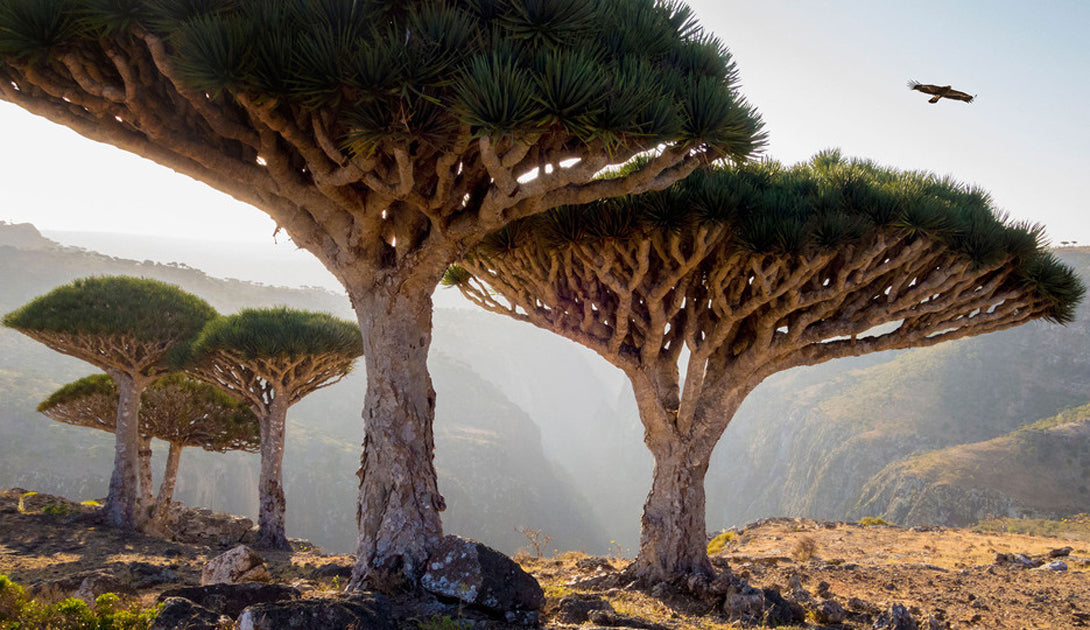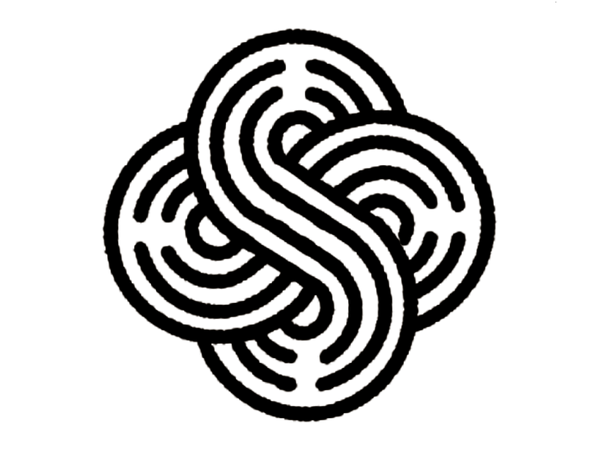
The Crimson Legacy: Unveiling the Mystique of Socotra's Dragon’s Blood
Awaken To The OneShare
The Mystique of Dragon’s Blood: The History, Culture, and Harvesting of the Socotra Island Resin
Nestled in the Arabian Sea, off the coast of Yemen, lies Socotra Island, a place often referred to as "the most alien-looking place on Earth." A UNESCO World Heritage Site, Socotra is home to a dazzling array of unique flora and fauna, with one particular tree standing out both for its surreal appearance and cultural significance: the Dragon’s Blood Tree (Dracaena cinnabari). This otherworldly tree, with its umbrella-like canopy and crimson-red sap, has fascinated humans for centuries and played an integral role in the island’s history, culture, and economy.
Let us delve into the story of Socotra's "dragon's blood," exploring its historical significance, cultural rituals, and the age-old techniques used by the island's inhabitants to harvest this treasured resin.
A History Written in Red
The association of the Dragon’s Blood Tree with mythology and trade stretches back thousands of years. The tree's resin, colloquially known as "dragon's blood," has been used since antiquity, mentioned in texts from the Greek, Roman, and Islamic civilizations. According to local legend, the tree sprang forth from the blood of a dragon slain in battle, its crimson resin symbolizing the ferocity and vitality of the mythical creature. This tale echoes in ancient beliefs, where dragon’s blood was considered both mystical and medicinal.
- Antiquity and Trade: Dragon’s blood was a coveted commodity in the ancient world. It was transported along the Incense Road, a network of trade routes linking the Arabian Peninsula to the Mediterranean, where it was used as incense, dye, and medicine. Roman naturalist Pliny the Elder wrote of its uses as a wound-healer and astringent, while in China and India, it became a key ingredient in traditional remedies and alchemical practices.
- Medieval Mysticism: By the medieval period, dragon’s blood found its way into European alchemy and magic. It was believed to ward off evil spirits and amplify the potency of spells. Artists also used the resin to create vibrant red pigments for manuscripts and paintings.
Over the centuries, dragon’s blood retained its reputation as a substance of extraordinary value, cementing Socotra's role in global trade and elevating the Dragon’s Blood Tree to the status of an ecological and cultural icon.
Culture and Mythology on Socotra
For the people of Socotra, the Dragon’s Blood Tree holds profound cultural and symbolic significance. Its resin is considered a gift from nature, embodying life and vitality.
- Folklore: Local tales often depict the tree as sacred, a connection between the earth and sky. The deep red sap is viewed as a life force, representing both protection and fertility. In some stories, the trees are guardians of the island, standing sentinel against invaders and misfortune.
- Traditional Medicine: Socotrans have long used dragon’s blood for its therapeutic properties. It is applied to wounds to promote healing, ingested in small amounts to treat gastrointestinal ailments, and used as an anti-inflammatory. The resin is also a key component of traditional cosmetics and dyes.
- Ritual Use: Dragon’s blood is central to many local ceremonies. During weddings or festivals, it is burned as incense to bless participants and ensure prosperity. Some communities also use the resin in rituals to mark significant life events, such as births and deaths, believing its smoke purifies and protects the soul.
The Ritual of Harvesting Dragon’s Blood
Harvesting dragon’s blood from the Dracaena cinnabari is a delicate and labor-intensive process that has been passed down through generations. The people of Socotra approach this activity with deep reverence, treating the trees as living entities to be respected and nurtured.
- Seasonality and Sustainability: The resin is typically harvested during the dry season when the sap flows more readily. Socotrans are careful not to over-harvest, as damaging the trees could disrupt the fragile ecosystem and diminish future yields.
-
The Process:
- Harvesters make small, controlled incisions in the bark of the tree using traditional tools.
- As the sap oozes out, it oxidizes in the air, turning from a pale yellow to the signature deep crimson hue.
- The resin is left to dry and harden on the tree before being collected in small pieces.
- Community Effort: The harvest is often a communal activity, involving multiple families who share in the labor and rewards. Women, in particular, play a crucial role in processing the resin, sorting, grinding, and preparing it for trade or local use.
This traditional method ensures that the trees are not harmed and remain productive for decades. The reverence with which Socotrans approach the harvest highlights their deep connection to their environment and their role as stewards of this unique ecosystem.
Modern Challenges and Conservation Efforts
Despite its rich history and cultural importance, the Dragon’s Blood Tree faces significant threats in the modern era. Climate change, deforestation, and overharvesting pose serious risks to its survival.
- Climate Change: Socotra’s climate has become increasingly unpredictable, with longer droughts and more intense storms. These changes affect the ability of Dragon’s Blood Trees to reproduce, as young saplings struggle to survive in harsher conditions.
- Overharvesting: The global demand for dragon’s blood resin continues to grow, fueled by its use in cosmetics, herbal medicine, and spiritual practices. Unsustainable harvesting practices in some regions threaten the delicate balance of Socotra’s ecosystem.
-
Conservation Efforts:
- Socotra’s inclusion as a UNESCO World Heritage Site has drawn international attention to its unique biodiversity, spurring efforts to protect the Dragon’s Blood Tree and its habitat.
- Local communities, in partnership with conservation organizations, are working to promote sustainable harvesting techniques and reforestation projects. These initiatives aim to ensure that the tree continues to thrive for future generations.
The Allure of Dragon’s Blood in the Modern World
Today, dragon’s blood remains a sought-after commodity, valued for its versatility and mystique. It is used in everything from natural remedies and incense to high-end skincare products and art restoration. For many, it is more than just a resin—it is a symbol of endurance and the enduring connection between humanity and nature.
The story of Socotra’s Dragon’s Blood Tree is one of resilience, both of the tree itself and the people who rely on it. As we continue to face global environmental challenges, the lessons of Socotra—rooted in balance, respect, and sustainability—offer a powerful reminder of the importance of living in harmony with the natural world.
In the red veins of the Dragon’s Blood Tree flows not only sap but also the lifeblood of a culture and the echoes of an ancient legacy, a story that continues to captivate and inspire.
